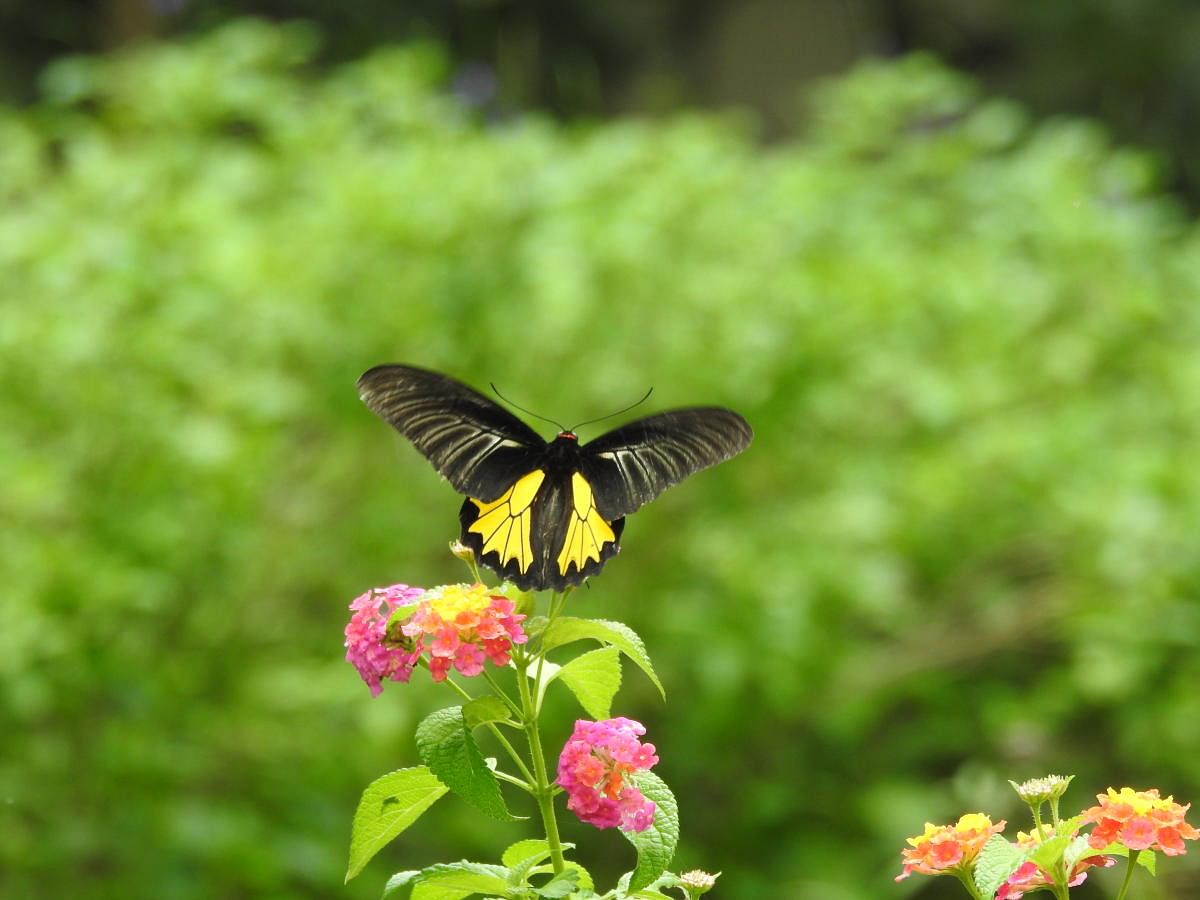Life written on vibrant wings











It is not just the wings of butterflies that are fascinating and colourful, but their lives too. While there are species such as the plain tiger which completes its entire lifecycle from egg, caterpillar and pupa to an insect with wings in just 45 days, there are also butterflies that can live for over a year.
Interestingly, if the climate is not suitable, butterflies can go into hibernation during the pupa stage, and ‘delay’ their life progress.
There are more than 318 species of butterflies in the ecologically-sensitive Western Ghats, out of which nearly 200 are in the jungles of Joida in Uttara Kannada district. Each butterfly lays its eggs and goes into the pupa stage on a specific ‘host plant’.
These are some of the fascinating details that have been brought out in the form of a book, The Butterflies of Haliyal Forest Division, by Deputy Range Forest Officer Santosh A Gavas and Beat Forester Ramachandra Megani. The book was released during the Hornbill Festival held in Dandeli recently.
The publication is a result of their efforts over the last six years, where they studied the life cycle of nearly 40 species of butterflies on the one acre of land at the Saalumarada Thimmakka Tree Park in Joida town. This park, which has recorded more than 128 species of butterflies, is the first such open park in the entirety of North Karnataka.
“After bees, butterflies are the second most important pollinators in the wild. From grass to huge trees that are 20 m tall, these butterflies can pollinate them,” said Ramachandra.
Santosh explained that butterflies are also an ‘indicator’ species. This means that their existence in large numbers and the timely completion of their life cycles indicate that the surrounding areas have low levels of pollution.
Host plants
The first lesson the researchers learned when they commenced their study was the importance of host plants.
“There are at least 40 to 50 species of plants that these butterflies introduced to us,” said Santosh. The forest staff planted more than 80 species of host plants and 30 varieties of nectaring plants that helped them attract butterflies, including the southern birdwing, Malabar tree nymph, Tamil yeoman, Malabar banded peacock and blue mormon to the park.
“We started observing their courtship, mud-puddling, nectaring, laying of eggs, the emergence of caterpillars from eggs and their feeding. We also studied the pupa stage, their meta morphing into insects with different-coloured wings, and other aspects of their lifecycle,” said Santosh.
From egg to adult stage the butterflies are prey to a host of insects and birds. On an average, a female butterfly lays 100 to 400 eggs, but the survival rate is very less. While there is an estimation that less than 2% of the eggs survive, there is no scientific study yet on this.
The writers stress the urgent need for a scientific study to understand more about the adapting of butterflies to the new environment and invasive host plants.
By planting the right host and flowering plants in an educational institute and office premises one can have their own butterfly park, say the foresters.
Canara Circle Chief Conservator of Forest Vasanth Reddy K V said that though the Forest Department provided basic facilities for the two forest personnel, it was their zeal and passion that led them to go beyond their call of duty and study the butterflies. “Their work will act as a guide to identifying the butterflies and a better understanding of these mesmerising beauties,” he added.